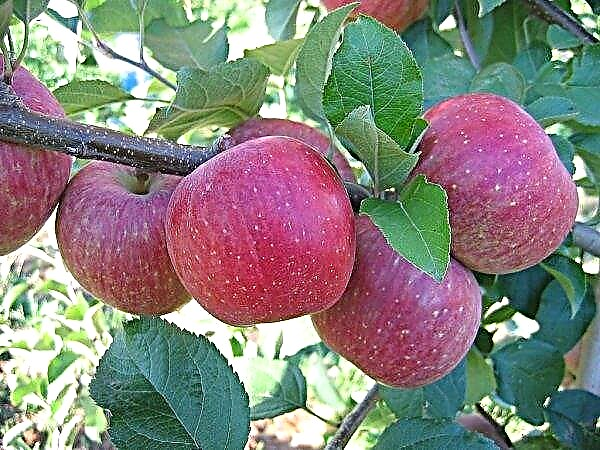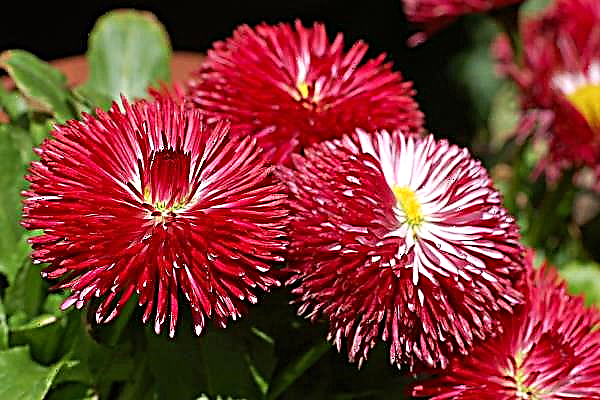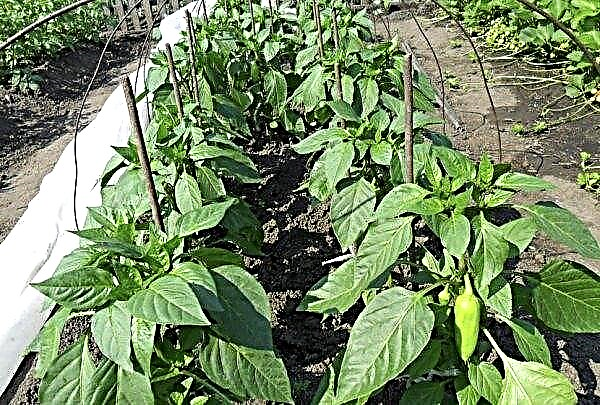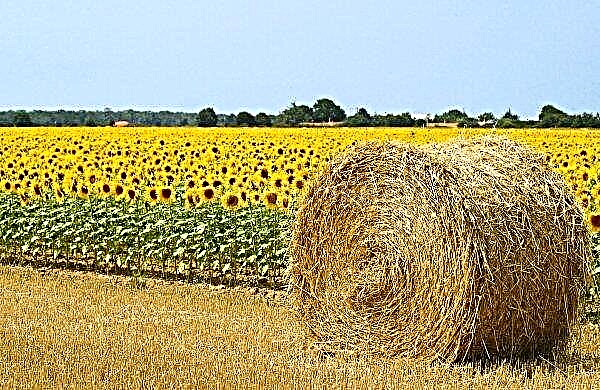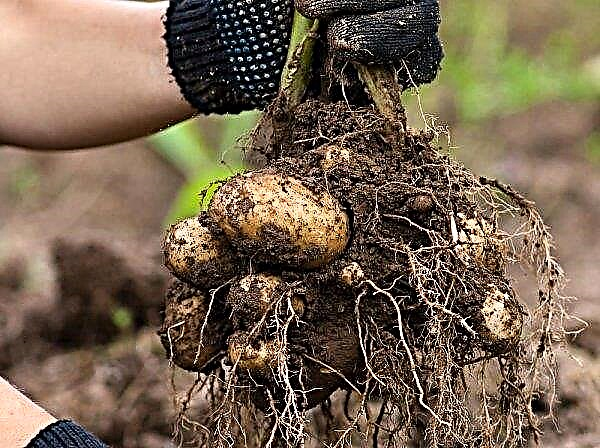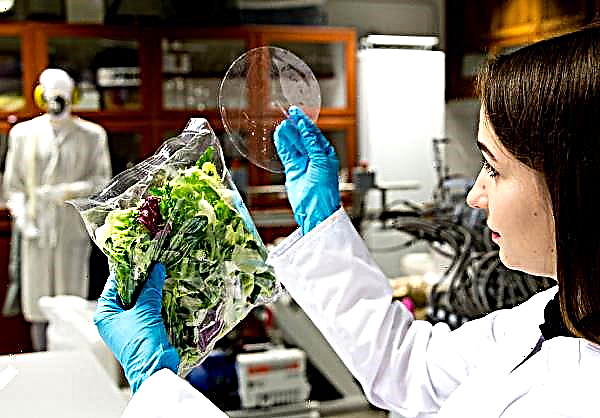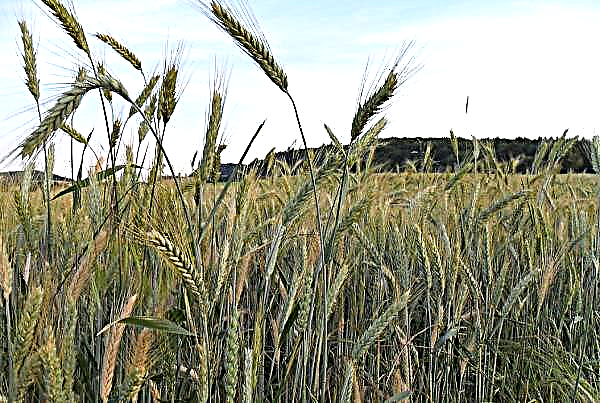Thuja is a highly decorative perennial that is in great demand and success in the field of landscape design. The culture is unpretentious in leaving, is not capricious at cultivation, possesses excellent resistance to illnesses and parasites. However, in some cases, under bad weather conditions and non-observance of the main rules of agricultural technology, the shoots and needles of the plant begin to blacken. What causes the darkening of the thuja, and how to prevent this phenomenon - find out from the article.
What to do if branches and needles turn black
Quite often, gardeners with the onset of springtime can notice on the thuja the appearance of black spots on branches and needles. It is very important to notice the problem in time and immediately take a set of measures to save the perennial.

The causes of plant darkening in most cases are:
- fungal ailments;
- feces of animals.
To determine the reason why shoots and needles are darkening, it is necessary to carefully examine the bushes, pay special attention to the places of localization of dark spots. If they are mainly concentrated below the perennial, have a chaotic order, this indicates that the plant was "tagged" with a dog or cat.
Important! It may take a long time before the gardener finds out the true cause of the appearance of blackness on the thuja. That is why experts advise at the first sign to spray the shrub with fungicidal, antifungal drugs.
Moreover, if the negative impact lasted a long time, then the lesion site will be quite extensive. A large infection zone can be detrimental to the culture: damaged branches turn black, needles lose their luster, darken, dry out, and as a result fall off.
 As a rule, infected parts of the plant can no longer be restored. At the best outcome, the bush will lose its branches, at the worst, it will completely die.
As a rule, infected parts of the plant can no longer be restored. At the best outcome, the bush will lose its branches, at the worst, it will completely die.
If the lesion is small, then experts advise correcting the situation by flushing out toxic substances. To do this, shoots are abundantly watered with clean water, and damaged needles of needles are removed manually. In addition to this, it is recommended to spray the branches with any growth stimulator, for example, Megafol.
Did you know? Western thuja has a pleasant delicate aroma. Its wood and sheets contain unique essential oils, which are successfully used in cosmetology and perfumery.
The most common cause of blackening of thuja are considered to be fungal infections. They can be recognized not only by the darkening of branches and needles, but also by the formation of spores of fungi on the shoots that look like black droplets. At the same time, the disease does not appear immediately - at first the needles change color from dark red to saturated red, after which it turns black.
 The presence of a thick dark coating on the shoots of a plant may indicate a defeat by Schütte disease.
The presence of a thick dark coating on the shoots of a plant may indicate a defeat by Schütte disease.
At the initial stage of the disease, the needles turn yellow, then it becomes darker, almost brown-black. In the middle of the summer season, the fruiting bodies of the fungus can be easily seen with the naked eye. Similar symptoms are manifested in rust: the needles first darken, then fall off.
Fight any fungal ailments immediately, practicing the treatment of shrubs with special fungicidal and biological products - Fundazole, HOM, Epin, copper oxychloride. As a rule, spraying is carried out twice, with an interval of 1-2 weeks.
 Sometimes triple processing may be required. Completely infected, dried up and dead branches must be removed and destroyed by burning. The same events are carried out with the dead shrub.
Sometimes triple processing may be required. Completely infected, dried up and dead branches must be removed and destroyed by burning. The same events are carried out with the dead shrub.
How to save a thaw with darkened roots
Too waterlogged soil, lack of drainage or a close occurrence of groundwater can provoke the development of diseases that affect the root system of the plant. Of particular danger to thuja is late blight - a fungal ailment that "settles" on the roots, then gradually spreads along the trunk and shoots.
The progression of the disease leads to the fact that the root processes and trunk at the base become loose, the bark and needles change their color to gray. To combat the disease, all affected areas of the plant are destroyed, and the bush is treated with a solution of any fungicide, for example, Fundazole. They also disinfect the area with wood ash, since fungal spores are able to live in the soil all winter.

Fusarium can be the cause of darkening of the root roots, in which the roots are first infected, then the shoots dry out, the needles turn yellow and fall off. In this case, to save the tree, its roots and bark are watered with systemic fungicidal preparations.
As a rule, shrubs with a weakened immune system are affected by fusarium, so these plants are additionally fertilized with agents with a high content of iron and copper, for example, Fundazole or Kartotsidom.

Why thuja darkens after landing
In some situations, you may notice the darkening of the evergreen thuja after planting.
The weakening of the culture and the color change of the needles can cause the following factors:
- The composition of the soil. Poor sandy soil can cause the plant’s root system to not receive enough oxygen and nutrients, which can cause it to dry out. At the same time, planting on clay heavy, poorly drained lands can also cause root decay, darkening of leaves and needles. In such cases, the plant should choose a light, nutritious, air- and moisture-permeable soil.
- Root neck deepening. When planting a seedling, it is necessary to ensure that its root neck is located 4-6 cm above the surface. Otherwise, the plant will not be able to take root, lose strength and undergo various fungal diseases.
- Frequent shrub planting. When planting several thuja, a distance between them should be maintained, which is equal to half the maximum width of the crown of an adult shrub. Too close a landing can cause the transfer of infections and parasites from one tree to another. In addition, if the perennial is crowded, then its root system will begin to suffer simultaneously from a lack of oxygen and excess moisture, which will lead to a weakening of immunity.
Important! When planting the most popular decorative thuja Smaragd between shrubs, an interval of at least 4 m should be maintained.
Principles of Proper Care for Thuja
Of course, in order to prevent any damage to the arborvitae, including the blackening of shoots and needles, the basic rules of agricultural technology should be followed during its cultivation. The plant itself is unpretentious in maintenance, has excellent frost resistance, not too moody to the composition of the soil.
Nevertheless, while the culture is young and is just beginning to develop, for its full growth should:
- organize regular watering and feeding;
- carefully monitor the control of soil moisture, prevent excessive waterlogging;
- systematically carry out loosening of the soil and weeding of weeds on the site;
- without fail in the spring to carry out sanitary pruning and shaping;
- carry out preventive spraying of the bush with insecticidal and fungicidal preparations.
 Violation of the main rules for caring for the bush, excessive waterlogging, prolonged stagnation of moisture can cause the development of various ailments, as well as the defeat of thuja by pests.
Violation of the main rules for caring for the bush, excessive waterlogging, prolonged stagnation of moisture can cause the development of various ailments, as well as the defeat of thuja by pests.
It should be remembered that to heal the culture, choose the right and effective treatment is within the power of anyone, even a beginner gardener. The main thing is to notice the problem in time and take all possible actions to eliminate it.
Thuja, as a highly ornamental plant, is widely used to decorate gardens and parks, as a main accent in landscape compositions. The culture is not capricious, it does not require special efforts when growing, however, to maintain its aesthetic qualities, it needs proper care, timely treatment from parasites and ailments.Did you know? Thuja wood, due to its unique composition, practically does not rot. There is a known case when the wood lying in the ground for one and a half thousand years of dead tree was perfectly preserved and was suitable for cutting.





